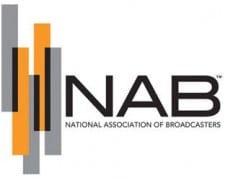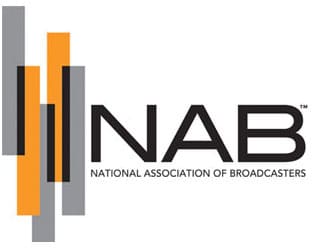 According to the latest filing from the National Association of Broadcasters in regards to the 2010 Quadrennial Review, the only thing that has changed in recent years is that broadcasters face a multitude of new competitors than they did just a few years ago. It argues that in order to continue to provide strong local content, it needs more, not less or even the same amount of ownership flexibility. And it adds that such dereg would actually promote, not lessen diversity.
According to the latest filing from the National Association of Broadcasters in regards to the 2010 Quadrennial Review, the only thing that has changed in recent years is that broadcasters face a multitude of new competitors than they did just a few years ago. It argues that in order to continue to provide strong local content, it needs more, not less or even the same amount of ownership flexibility. And it adds that such dereg would actually promote, not lessen diversity.
The FCC’s main points concern making it easier to create local broadcast television duopolies; eliminating subcap restrictions in the local radio ownership rules; eliminating print/broadcast cross-ownership restrictions; incentivizing the increase in diversity of broadcast ownership; and leaving intact the ability of local broadcasters to share resources with other licensees.
The full report can be accessed here.
For your convenience, we are providing a reprint of the NAB’s full executive summary to the FCC filing, which are reply comments dated 4/17/12.
The record in this proceeding examining the broadcast ownership rules of the Federal Communications Commission (“FCC” or Commission”) demonstrates not only that the current rules are unnecessary under section 202(h) of the 1996 Telecommunications Act, but also that they actually undermine the FCC’s competition, localism, and diversity goals. Abundant evidence shows that the digital and mobile revolutions have produced unprecedented levels of competition in the media marketplace and that broadcast stations compete intensely against each other and against myriad other platforms for audiences and vital advertising revenues. In this marketplace, the broadcast ownership restrictions disadvantage local stations vis-à-vis their competitors and threaten broadcasters’ competitive viability, especially in small and mid-sized markets.
The record is similarly void of evidence showing that the broadcast ownership rules remain necessary to promote localism. Rather, the record (including recent empirical studies) demonstrates that the current regulatory regime hinders localism by preventing stations from taking advantage of important economies of scale and scope, which ultimately constricts the resources that broadcasters can devote to local services, including news. Commenters also provided numerous real-world examples, to supplement the empirical evidence already on record, showing how common and crossownership of broadcast stations promote local service to communities.
Finally, the record demonstrates that the ownership rules do not enhance diversity, as marketplace forces and economic factors, not the ownership structure of a station or set of stations, drive diversity of content and viewpoint and directly affect what types of programming are aired. Because the current broadcast ownership restrictions do not promote any of the FCC’s stated goals, they no longer are necessary in the public interest and must be repealed or substantially relaxed.
Local Television “Duopoly” Ownership. The record overwhelmingly demonstrates that local television stations compete against a multitude of non-broadcast media outlets, and it would be plainly incorrect under section 202(h) not to give significant weight to these competitive alternatives. The financial stresses resulting from increased competition for viewers and advertisers are substantial for stations in all markets, but especially for stations in small and mid-sized markets that have disproportionately smaller revenue bases. Television broadcasters also provided substantial evidence that these financial stresses hinder their continued ability to serve local communities with high quality programming, including local news, and that relaxation of the duopoly rule would enhance localism, as local news production is subject to strong economies of scale and scope. For these reasons, many commenters agree that restrictions on local television ownership should be reformed to allow duopolies more freely in markets of all sizes.
The record lacks evidence justifying the retention of the duopoly rule’s top-four restriction or eight-voices test. Instead, commenters identified the flaws inherent in the rationales underlying these rules—namely, that the top-four restriction is based on arbitrary distinctions and does not guarantee four independent newscasts in local markets and that the eight-voices test does not promote diversity (as the Commission and the D.C. Circuit have previously recognized). A new study examining the revenue shares of local stations shows that, in many television markets (especially smaller ones), significant break-points occur between the first- and second-ranked stations, between the second- and third-ranked stations, and/or between the third- and fourth ranked stations, contrary to the presumption of the existing top-four prohibition that the only significant break-point is between the fourth- and fifth-ranked stations.
There is no basis for restricting duopolies based on the technical ability of digital television stations to multicast. There is no evidence showing that multicasting replicates the legal or economic benefits of common ownership of an additional station, or negatively impacts competition, localism, or diversity. To the contrary, multicasting provides significant public interest benefits, including additional and enhanced local and diverse programming, particularly ethnic-oriented and foreign language programming.
Local Radio Ownership. Retention of local radio ownership limits established in 1996 in a much less competitive and diverse audio marketplace can no longer be justified. Ample record evidence demonstrates that consumers enjoy a multitude of audio options and increasingly turn to new media to access audio programming. It is illogical and arbitrary to consider only broadcast radio stations in defining the relevant market, particularly because radio stations compete directly with these alternatives for audience share and advertising revenues in local markets. The record moreover lacks any evidence of concrete harms that are ameliorated by the existing local radio caps. Instead, numerous studies, including those commissioned by the FCC, have shown that higher levels of common ownership in local radio markets promote diversity.
In any event, claims about the extent of ownership concentration in the radio industry are almost invariably overstated. As shown in a new study, fully thirty percent of all commercial radio stations in Arbitron markets are either the sole station owned within its market by its station owner or are part of a two-station duopoly in a market.
There also is no evidence justifying the retention of the current AM/FM subcaps. Rather, the record demonstrates that the AM/FM subcaps are based on arbitrary distinctions, can adversely impact competition, do not promote localism, and may hinder the FCC’s diversity goal.
Cross-Ownership. The record lacks evidence to support the retention of the current newspaper/broadcast and radio/television cross-ownership restrictions in light of the intense competition in the multi-platform media marketplace and section 202(h)’s mandate.
Overwhelming empirical evidence demonstrates that the newspaper/broadcast cross–ownership restrictions do not advance the Commission’s goals, and no commenter has provided concrete evidence of any harm to competition, localism, or diversity that the restrictions serve to prevent. In contrast, the record incorporates numerous studies, and many commenters’ specific examples, establishing that newspaper/broadcast cross-ownership results in tangible benefits to local communities in the form of enhanced news services.
The record also overwhelmingly supports the proposal to eliminate the radio/television cross-ownership rule. Commenters agree with the Commission that repeal of the rule is unlikely to result in increased consolidation of broadcast facilities and that the rule is not necessary to promote localism or diversity.
Diversity of Ownership. The record supports the adoption of a variety of flexible, incentive-based programs to encourage media ownership by women and minorities, including: (i) tax-incentives; (ii) waiver/exception programs; (iii) establishment of reversionary rights for certain sales; (iv) subchannel licensing programs; (v) primers on investment and financing in broadcast enterprises; (vi) reinstatement of the eligible entity standard and related measures; and (vii) modification of certain radio operation technical rules to reduce entry barriers and promote efficiencies. As NAB has previously explained, ownership restrictions reduce economic incentives to invest in broadcasting, making it more difficult for all broadcasters to raise capital. Rather than retaining existing barriers, the Commission should focus on expanding opportunities.
Attribution Matters. The record contains no basis for treating sharing arrangements as attributable or for requiring their increased disclosure. Sharing arrangements allow broadcasters to better serve their local communities, and the record contains numerous examples showing how the cost savings from these arrangements allow broadcasters to provide services that would not otherwise be possible, including the production of local news. Restricting sharing arrangements would be bad public policy and may exceed the FCC’s statutory and constitutional authority, if regulations are imposed affecting how broadcast stations cover newsworthy events, obtain news content, and/or present news programming.
The record further shows that sharing arrangements do not impact licensee control over operations or programming decisions and that joint negotiation of retransmission consent agreements do not implicate control over core operating functions. The Commission should reject efforts by self-interested multichannel video programming distributors to further constrain broadcasters in their efforts to compete for audiences and advertising revenues and to negotiate for retransmission consent. The focus of this proceeding should remain on the directive of section 202(h) to review the broadcast ownership restrictions in light of the ever-increasing competition in the video and audio marketplaces.





